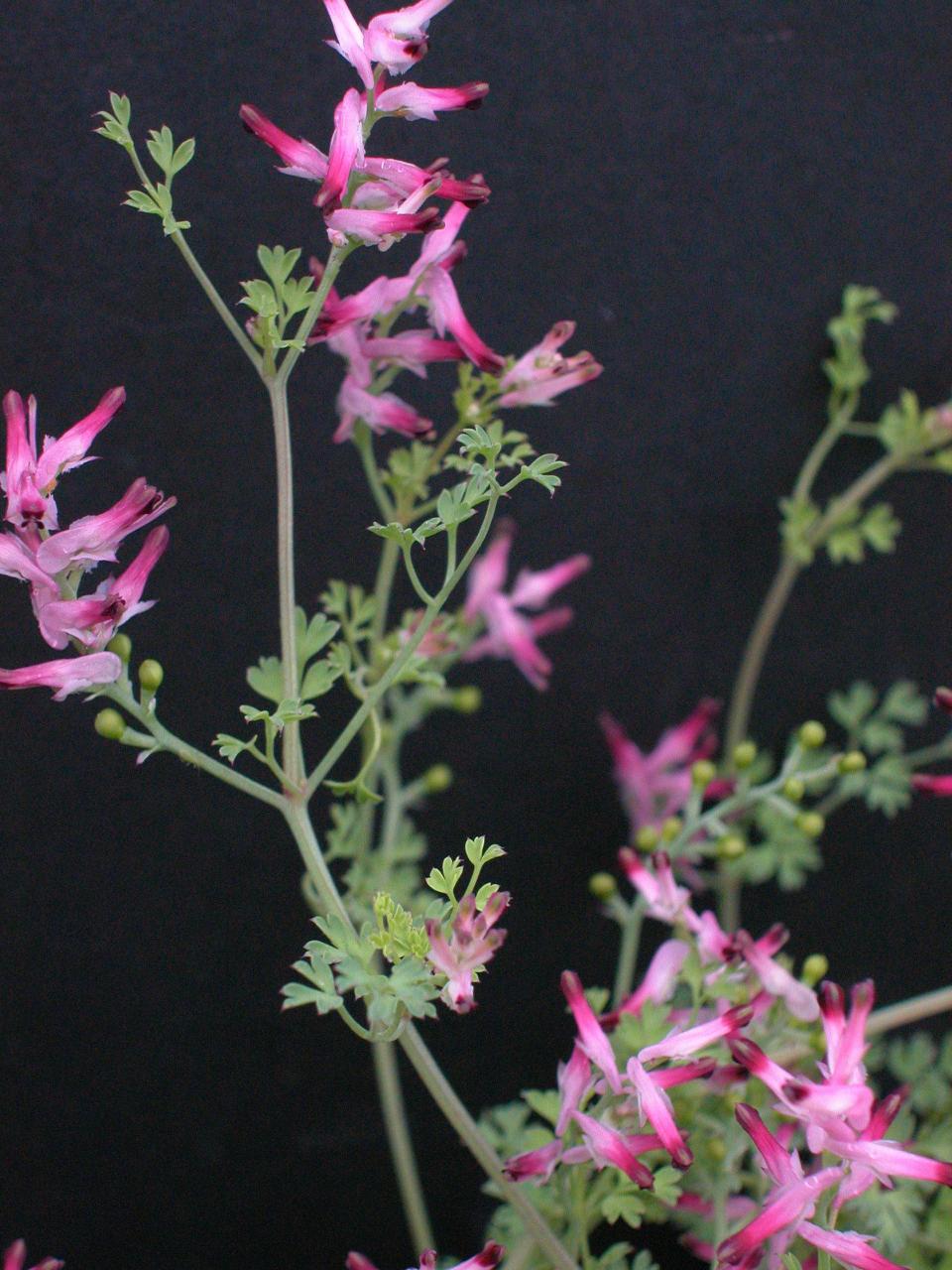Spreading leaves give this spring bloomer its name | Mystery Plant
Picture yourself in Bavaria in the spring, in a friend’s backyard, admiring the view of the Alps in the distance. Your host, showing you around, spots this little weed, and exclaims, “Schau mal, Erdrauch!” (translation below…)
Our little plant (Earthsmoke, Fumaria officinalis) is common now as a naturalizing species in North America. It is indeed native to Europe and the Mediterranean, and is now widely found throughout the United States, and certainly in all of the southern states. It is an annual, appearing in the early spring, each plant lasting but one short season.

Sometimes it grows in spreading patches. It’s not very tall, usually less than a foot. It has alternate leaves, which are fragile, easily torn, divided and fern-like, and often very chalky and gray. Because of this, the plants, when abundant enough, resemble a sort of smoky fog cloaking the ground.
The small flowers, which are starting to appear now, are somewhat tubular and pink, each with two narrow sepals and 4 petals. The petals are darker and purplish toward the tips. One of the petals is swollen at the base, and forms what we botanists call a rounded “spur.” The flowers are able to pollinate themselves, not needing to rely on insect visitors.
After the flower parts wither and fall away, small, rounded seed-pods are formed on the stem, each tiny pod containing a single globose seed. Once spring decides to become summer, whether in Europe or America, the little plants are all dried up and gone, but the tiny seeds are left in the soil, waiting for the next spring.
This plant, which is related to both the poppy and mustard families, has reputedly been effective as a medicinal plant, even recently. Tonics made from it have been used as an eye-wash, and as a cure for acne, among other things. Of course, don’t take this as an outright recommendation for using it.
Whatever medicinal qualities it does have must come from the organic compounds (alkaloids) which give its fresh stems and leaves a decidedly acrid, bitter taste. Believe me, it’s not a very good taste. And sure enough, some of the compounds in this plant are probably a bit toxic, if ingested in sufficient quantities. But who could stand to eat it in “sufficient quantities”?
The plants in bloom are a bright, new indicator of the coming spring. It is something of a weed, but once they start blooming, they don’t last very long.
Translation…from above? Your southern German friend is saying, “Looky there! Earthsmoke!” Hey, Bavaria is in southern Germany.
John Nelson is the retired curator of the Herbarium at the University of South Carolina, in the Department of Biological Sciences. As a public service, the Herbarium offers free plant identifications. For more information, call 803-777-8175 or email johnbnelson@sc.rr.com.
This article originally appeared on Tallahassee Democrat: Grayish spreading leaves Earthsmoke its name

